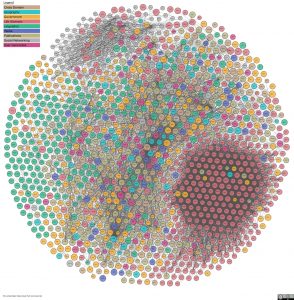Knowledge Graphs and Semantics

According to the literature, Knowledge Graphs (KGs) intend to represent a collection of real-world concepts (i.e., nodes) and relationships (i.e., edges) in the form of a graph used to link and integrate data coming from diverse sources. Knowledge graphs can be considered to achieve an early vision in computing, of creating intelligent systems that integrate knowledge and data on a large scale.
In its simplest form, a knowledge graph encodes meaning and data together in the form of a graph:
- Knowledge (i.e., meaning): Concepts and the relationships between the concepts are first-class citizens, meaning they encode knowledge of how the domain users understand the world.
- Graph (i.e., data): A data structure based on nodes and edges that enables integrating data coming from heterogeneous data sources, from unstructured to structured
On a more industry-focused note, a Knowledge Graph can be defined as a specific type of graph with an emphasis on contextual understanding. Knowledge graphs are interlinked sets of facts that describe real-world entities, events, or things and their interrelations in a human- and machine-understandable format.
The idea of integrating data and knowledge, i.e., the meaning of data, in the same place appears implicitly or explicitly in the definitions. Indeed, a KG is always used as a structuring medium to express some knowledge. In general, expressing knowledge often comes down to describing real-world entities and their relationships. However, a KG can semantically describe abstract things, such as thoughts or intentions. Similarly, integrating different data sources into one physical or virtual source is often mentioned as a recurrent use case for KGs, particularly in industry.
The past decade has seen the rise of large Open KGs (OKG), such as DBpedia, Wikidata, Yago, or ConceptNet, as well as large close KGs such as the Google KG, or Microsoft’s Bing KG. As such, KGs are becoming popular and ubiquitous in various academic and industry projects.
The Linked Open Data Cloud (LOD) cloud gives a panorama of the diversity of available knowledge ready to be exploited and processed. Most of our research on these topics is related to the Machine Learning and Data Mining topic of the department.
